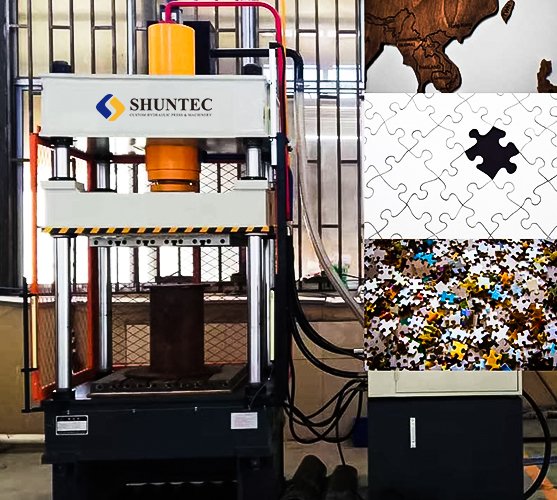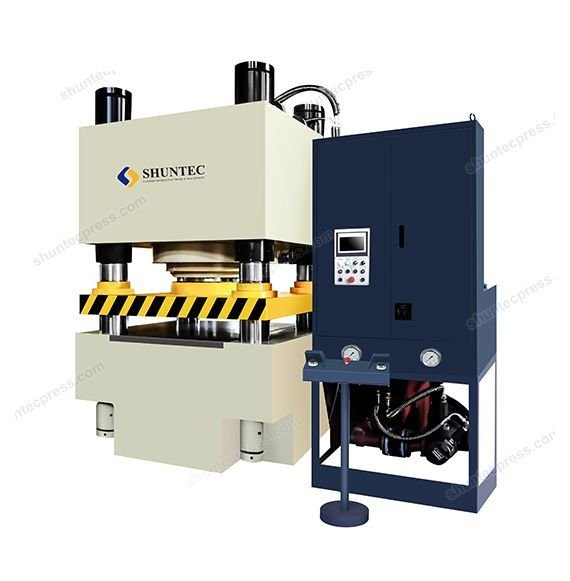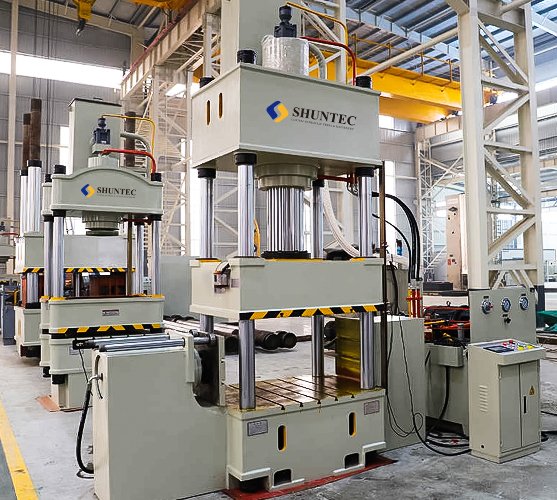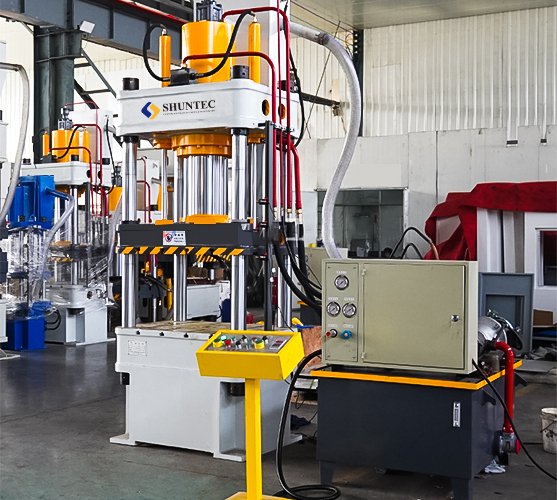1. The oil seal of the servo press is a very important part of the assembly process. If it fails or is used abnormally, it will lead to high maintenance costs, immeasurable downtime, and most importantly, reduce customer confidence in product quality.
Reasons for problems: Usually, the equipment's accuracy during the installation process and the design of the tooling are defective.
How to monitor this problem: F-S monitoring curve + import evaluation window.
Solution: adjust the device precision. Use correct work equipment. The servo press monitors the whole process and sets up an evaluation window to evaluate the press-fitting process.
2. After the ring gear is pressed in, the binding force is insufficient, and there is a risk that the ring gear will fall off later, and the ABS will fail.
The cause of the problem: is the tolerance of the fit size (the wall of the ring gear itself is thin). After the ring gear is mated, more force is applied to the ring gear, causing the ring gear to be overstressed.
How to monitor this problem: Monitor the inflection point force magnitude.
Solution: control the tolerance size or use hot pressing. Limit the final stopping force.
3. The valve seat of the cylinder head of the servo press cannot be pressed to the bottom. After a period of operation, the valve seat will fall, and the valve clearance will become empty, which will seriously cause the valve to burn out and leak air.
The cause of the problem: the material is cut and pressed in, and the positioning surface causes a gap of 0.02mm to be out of tolerance and be scrapped. The coaxiality difference between the upper and lower indenters. The size of the hole or seat is out of tolerance, etc.
How to monitor this problem: F-S monitoring curve + import evaluation window + inflection point evaluation window.
Solution: Adjust the accuracy of the servo press and use the correct tooling.
Through the analysis of the failures that often occur in the press-fitting and assembly process of the above three typical parts of the servo press, it shows how Shuntec Machinery monitors and discovers unqualified products in the production process in time, so as to ensure the pass rate of products and eliminate unqualified products after they enter the market. Risk of quality problems.
For assembly occasions with high requirements for press-fitting, it is more suitable to use Shuntec Machinery's servo press, a complete set of servo press-fitting systems with stable pressure and accurate displacement. Compared with the traditional integrated system of PLC+electric actuator+pressure displacement sensor, the whole set of servo press press-fitting system has faster response speed and higher control precision; it can collect more accurate press-fitting process data, and can monitor the process Accurately evaluate the abnormality that occurs, and respond quickly when we need precise control of force or displacement, and meet the specified control requirements.
During the production and use of the servo-hydraulic press, in addition to paying attention to the operation specifications and usual maintenance, we also need to find ways to improve the operating efficiency of the servo-hydraulic press. How to improve it? We briefly introduce the following points:
1. The operator of the servo-hydraulic press must understand the principle of the hydraulic system, understand the effect of the main hydraulic components of the equipment, and grasp the operating sequence of the system. Before starting the servo-hydraulic press, you should check whether all the moving mechanisms and solenoid valves are in the initial state, and check the oil level in the fuel tank. If any abnormality or lack of oil is found, it is forbidden to start the hydraulic pump motor and find a repairman for repairs. The operator should always check the working condition of the hydraulic system, observe the working pressure and speed, and check the size of the workpiece and the wear condition of the props, so as to ensure the stable and reliable operation of the hydraulic system.
2. In winter, when the oil temperature of the fuel tank does not reach 25°C, each executive organization cannot start to work in sequence, but can only start the hydraulic pump motor to make the hydraulic pump work empty. During summer operations, when the oil temperature in the fuel tank is higher than 60°C, pay attention to observe the working status of the hydraulic system and notify the maintenance personnel to deal with it. The operator cannot damage the interlocking device of the electrical system, cannot push the electric control valve by hand, and cannot damage or move the position of each operating gear arbitrarily.
3. For a servo-hydraulic press that has been shut down for more than 4 hours, before the operation, the hydraulic pump motor should be started for 5-10 minutes before working under pressure. When the hydraulic system fails, the operator cannot tamper with it without permission and should immediately report to the repair department. Always maintain the cleaning of the servo-hydraulic press to prevent dust, cutting fluid, cutting, cotton yarn, and other debris from entering the oil tank.
200-ton frame-type hydraulic press safety protection device:
1. Set the emergency stop button, press the emergency stop button, and the press will stop immediately after the power is off.
2. The slider of the 200-ton frame-type hydraulic press is equipped with limit switches at the upper and lower limit positions.
3. A hydraulic support insurance circuit is set in the lower chamber of the piston cylinder.

Debugging steps of 200-ton frame-type gantry hydraulic press:
Before commissioning the 200-ton frame-type hydraulic press, check whether the installation is perfect, whether the pipeline is correct and firm, strictly check whether the electrical wiring is correct and whether safety protection such as grounding, and whether the overload meets the regulation.
1. When the lead wires of the motor are not connected, first press the "|Start" button of the motor, and then press the up button, up button, and return button to check whether the action of the electromagnet and other electrical components is correct, and pay special attention to the interlocking of the travel switch. The movement of components should be ensured to be accurate.
2. Loosen (left-hand) the pressure regulating handwheel of the manual valve to prevent accidents caused by the action of the electromagnet, start the motor, check whether the rotation direction meets the requirements, keep the oil pump in a no-load running state, and check whether the motor and oil pump are working normally.
3. Press the down button to check whether the actions are normal. After the above work is completed, continue to move up and down several times to remove the air in the pipeline and stop the moving beam at the upper limit position.
The 100-ton jigsaw puzzle hydraulic press signifies a monumental achievement in the puzzle manufacturing industry. Offering a perfect blend of power, precision, and technological sophistication, this press significantly enhances operational efficiency and the quality of the end product. It boasts an autonomous power structure and an electrical system, utilizing a centralized control system operated by buttons. The machine incorporates both inching and semi-automatic control methods. Notably, it allows for adjustments to the working pressure and stroke range based on the processing technology.

The 100-ton jigsaw puzzle hydraulic press is distinguished by its intricate structure and multi-faceted features:

The hydraulic system is the heart of the 100-ton jigsaw puzzle hydraulic press, with its critical components contributing to its overall performance:
The commissioning process is a collaboration between the supplier and the demander, involving several meticulous steps:
If you are interested, you can also watch the following video to learn more about our 500 ton puzzle hydraulic press.
The 100-ton jigsaw puzzle hydraulic press offers a combination of robust construction, sophisticated technology, and intricate customization options. It brings efficiency, precision, and unparalleled quality into jigsaw puzzle production, making it an invaluable asset for puzzle manufacturers. The detailed commissioning process ensures smooth installation and operation, bolstered by comprehensive training and technical support. In the world of jigsaw puzzle manufacturing, this hydraulic press is truly a game-changer.
Servo press, also known as precision numerical control servo electronic press, is based on the principle that a servo motor drives a high-precision ball screw for precision pressure assembly operations, and can realize the whole-process closed-loop control of the press-fitting force and press-in depth during press-fitting operations.
Following the rapid development of the automobile industry, the level of stamping has been continuously improved. Servo presses are more and more widely used by various automobile manufacturers. The main reason is that the servo motor can convert the received electrical signal into angular displacement or angular velocity output, which can be very The characteristics of precise manipulation speed and position meet the high precision and high controllability requirements of the press output. The servo press adopts a high-power servo drive, which can not only improve the utilization rate of materials, but also improve the quality of the parts, reduce the impact on the mold, and greatly increase the life of the mold, thus saving the development cost of the mold.
From the analysis of the stamping process, the main influence of the servo press is:
① Improve the material utilization rate of the whole vehicle and reduce the purchase cost of the whole vehicle;
②The servo press improves the quality and surface quality of the formed parts, and better controls the precision of the parts;
③The servo press reduces the impact on the mold, allowing maximum freedom of mold design while reducing the investment cost of the mold;
④ Servo presses are also much better than mechanical presses in terms of mold maintenance and environmental noise.
The servo hydraulic press is a new type of hydraulic press with a servo motor and a servo oil pump. The product structure is the same as that of the ordinary hydraulic press, but the repeat positioning accuracy of the servo-hydraulic press is higher than that of the conventional hydraulic press. But no matter how good the equipment is, there will be some problems during use. Here are a few common problems for you:
1. Bolt connection
Bolt connection is the basic equipment in the servo-hydraulic press, but if the operation is improper, such as the connection is too tight, the bolt may show metal fatigue due to the long-term effect of electromagnetic force and mechanical force, so as to induce shearing, thread slippage and other components The phenomenon that the equipment is loose will bury the hidden danger of accidents. For the bolt connection used to conduct current in electrical engineering, the mechanical effect and electrothermal effect between bolts and nuts should be handled well. It should be compacted and compacted to prevent the contact resistance from increasing due to loose crimping, which will cause heat and touch. A series of chain reactions such as surface oxidation and resistance increase will lead to overheating and melting of the connection, grounding short circuits, and disconnection accidents.
2. Oscillation
(1) The pump is mainly caused by the influence of factors such as large bearing clearance, poor concentricity between the rotor and the housing, or excessive friction between the rotor and the stator.
(2) Servo hydraulic machine motor, the causes include large bearing clearance, unbalanced rotor, or uneven air gap with the stator.
(3) Servo hydraulic press operation, if the process operating parameters violate too many additional parameters, it is easy to cause the pump operation stability to be unbalanced.
3. Supercurrent
There may be three reasons for this situation: the pump bearing is damaged, there are foreign objects inside the servo-hydraulic press; the motor overload current setting is low, the line resistance is high, etc.; the medium used in the process operation exceeds the design capacity of the pump due to its high density or high viscosity.
4. Electrical equipment
(1) Improper operation of the servo-hydraulic press leads to insufficient contact pressure and contact area of the dynamic and static contacts.
(2) The arc contact finger and contact equipment of the circuit breaker are incorrect, and the stabbing process, touch pressure, synchronization, and opening and closing speed cannot meet the requirements.
(3) If there is an error in the pressure regulating equipment of the servo-hydraulic press or the equipment falls into debris and gets stuck in the structure if it is not dealt with in time, accidents of varying degrees will also occur.
(4) The insulation of the main transformer of the servo-hydraulic press is damaged or broken down. When the main transformer hanging core and the high-voltage pipe are installed, the sundries such as nuts and sealing equipment will directly affect the change of the insulation strength of the main transformer.
The main body, slider, and workbench are the important components of the 630-ton single-column hydraulic press. The hydraulic cylinder is installed in the hole of the cylinder support plate of the main body. Reciprocating movement, the lower part of the main machine is equipped with a worktable, and the slider and the surface of the worktable are provided with "T" grooves, which are convenient for users to fasten and install molds.
The 630-ton single-column hydraulic press has been optimally designed by computer and adopts an overall welded structure. Ribs are added to the main stress-bearing parts. After stress, the stress distribution is reasonable, the rigidity is good, and the strength is high. Assembled, welded by gas-shielded welding, mechanically processed after vibration aging or tempering treatment.
The 630-ton single-column hydraulic press has sufficient strength and rigidity. The guiding surface of the guide post is electroplated with a hard chromium layer, which has high precision, good hardness, and a beautiful surface. The guide sleeve is embedded in the guide hole of the cylinder support plate of the main body. The guide sleeve is made of HT200, with a bronze guide belt embedded in it, which has good wear resistance and high guiding precision. A special dust-proof ring is installed on the upper part of the guide sleeve to prevent dust and dirt from entering The inner surface of the guide sleeve.
Installation and debugging:
1. The 630-ton single-column hydraulic press is assembled and debugged according to the assembly procedure before leaving the factory, the hydraulic and electrical control systems are carefully inspected, and no-load test run and overload test run are carried out according to regulations.
2. Staff guide the assembly and commissioning of the 630-ton single-column hydraulic press on site. Operators need to master the structural performance, operation methods, and skills of analyzing, judging, and troubleshooting common faults.
The 630-ton single-column hydraulic press fully considers the safety of the equipment itself, the safety of the operator, and the surrounding environment, and arranges corresponding safety devices such as limiters, emergency stops, protective covers, alarm lights, circuit protection, and equipment safety signs. Mechanical transmission, For dangerous sources such as electric shock, set warning signs and precautions in corresponding parts or areas, and provide corresponding protective measures.
The 315-ton three-beam four-column hydraulic press is a hot-selling product produced by Shuntec Machinery. It is a multi-functional hydraulic press. The body adopts a three-beam and four-column structure, which is economical and practical. The hydraulic control adopts a cartridge valve integrated system to reduce leakage points and operate reliably. , long service life, two forming processes of constant pressure and fixed distance can be realized, with the function of holding pressure and delaying time, the working pressure stroke can be adjusted within the specified range, centralized control with buttons, and three operation modes of manual, semi-automatic and automatic.

1. The precision of the machine is high: the 315-ton hydraulic press adopts a four-column and three-plate structure, and the vertical precision of the movable plate is controlled by four precision guide sleeves. The parallel precision of any point between the lower working surface and the upper working surface is within 0.03MM.
2. Accurate positioning by pressing down: Adjustable mechanical positioning of oil cylinder (accuracy 0.05mm), electrical positioning of position ruler (accuracy 0.03mm), pressure sensor pressure positioning (accuracy 0.1kgf).
3. Imported accessories: 315 tons of three-beam four-column hydraulic press and electrical components are made in Japan, Taiwan, and France. The failure rate is very small, the efficiency is high, the noise is low, and the maintenance is convenient.
4. High safety factor: comprehensive safety design, the two-handed start of the flat-headed button, and the machine can be started by jogging at the same time within 0.5 seconds. The emergency stop switch is in the middle of the start button, and the emergency stop is within reach, and emergency accidents can be handled in time. A safety grating is installed on the front of the workbench. If the machine is in operation, if the hand is accidentally inserted into the working space, the machine will automatically rise, and the red light will be on when the grating fails, which has a high safety factor.
5. Convenient mold adjustment: The 315-ton three-beam four-column hydraulic press is equipped with up and down inching buttons to facilitate mold installation and calibration.
6. The system adjustment is simple: the pressure is adjusted by the overflow valve, the speed is adjusted by the speed control valve, and the stroke is adjusted by the proximity sensor and the falling time. Decline pressure holding time, output record, and count.
7. Energy saving: Since the hydraulic cylinder uses a fast combination cylinder, the motor only needs 2.2 kilowatts of power: the motor stops automatically after 10 minutes of operating the machine to prevent unnecessary additional power consumption caused by not operating the machine, and only needs to be restarted when working. Just start the motor.
8. High production efficiency: The 315-ton three-beam and four-column hydraulic press adopt a master cylinder, which can realize the rapid rise and stable pressurization of the hydraulic press, and improve production efficiency.
9. Low noise: The noise of the 315-ton three-beam and the four-column hydraulic press does not exceed 60 decibels when it is on standby.
10. Easy to move the machine: four casters are installed under the 315-ton three-beam and four-column hydraulic press, which can be moved lightly, labor-saving and efficient.
11. Ease of material return and cleaning: the working surface is equipped with a blanking chute and blowing device.
The 200-ton four-column hydraulic press is divided into 200-ton three-beam four-column hydraulic press, 200-ton two-beam four-column hydraulic press, 200-ton four-beam four-column hydraulic press, etc. According to different purposes of customers, different models of 200-ton hydraulic presses are selected. The 200-ton four-column hydraulic press is composed of three parts: the main engine, the hydraulic transmission device, and the electrical control device. It has an independent hydraulic transmission device and an electrical control box, which can be centrally controlled on the console to realize three operating specifications of adjustment, manual and semi-automatic cycles. The working pressure, working speed and stroke range of the machine can be adjusted according to the process requirements, and the ejection and stretching processes can be completed.

Today, I recommend a 200-ton four-column hydraulic press produced by Shuntec Machinery. It is characterized by an ejector cylinder, a work surface of 800x800, and a spacious workspace, which is convenient for four-body observation and close to the mold. The whole machine has a simple structure and good craftsmanship. In addition, Shuntec Machinery can also design and produce various tonnage powder-forming hydraulic presses, frame hydraulic presses, metal stretching hydraulic presses, etc. according to user parameter requirements.
The 200-ton four-column hydraulic press consists of two parts: the main engine and the control mechanism. The main engine part includes the fuselage, the main cylinder, the ejector cylinder, the liquid filling device, etc. The power mechanism consists of a fuel tank, a high-pressure pump, a low-pressure control system, an electric motor, various pressure valves, and directional valves, etc.
1. Master cylinder of 200-ton four-column hydraulic press
The cylinder body is made of high-quality steel, and the surface of the piston rod is quenched by intermediate frequency, which has a long service life. The main parts of the oil cylinder are made of high-quality sealing rings to ensure reliable sealing.
2. Hydraulic system
The 200-ton four-column hydraulic press adopts a large-flow cartridge valve, and an oil filter is installed at the oil inlet of the pump to prevent impurities from entering the hydraulic system to ensure the normal operation of the oil circuit; the system has oil temperature and oil level display, air filter device; The mailbox is a steel plate welded structure, and the bottom is equipped with a screw plug for oil discharge and sewage discharge.
3. Electrical system
The 200-ton four-column hydraulic press is equipped with an independent electrical control box to centrally control the operation of the entire machine. The equipment is equipped with a photoelectric protection device and an emergency stop button to ensure the safety of personnel and equipment during operation.
4. Operating system
The 200-ton four-column hydraulic press adopts the PLC programming system to realize free switching between automatic and semi-automatic operation modes, which is convenient for equipment maintenance; the operating speed of the equipment and the pressure of the main cylinder can be adjusted arbitrarily; it meets the process requirements of fixed stroke and constant pressure during production.
The workbench of the 200-ton frame-type hydraulic press can move up and down, which greatly expands the opening and closing height of the machine and makes it more convenient to use. It is composed of the main cylinder, a hydraulic power system, an electrical system, and other components. The workbench is welded with high-quality steel plates to ensure reliability and durability. The hydraulic system is located inside the fuselage, with a beautiful appearance and convenient operation, which can expand the working range and use the space on three sides to lengthen the stroke of the hydraulic cylinder (optional).
Introduction to the scope of application of the 200-ton frame hydraulic press:
The 200-ton frame-type hydraulic press is mainly suitable for the correction of shaft parts and profiles and the press-fitting of shaft sleeve parts; bending, embossing, sleeve shape of plate parts, stretching plastic products of simple parts; machine tools, internal combustion engines, textiles, etc. Machinery, shafts, bearings, washing machines, automobile motors, air-conditioning motors, electrical appliances, military enterprises, and foreign-funded enterprises assembly lines and other industries; plastic material pressing process, such as powder product molding, plastic product molding, cold (hot) extrusion Metal forming, sheet drawing, and horizontal pressing, bending, turning, and correction processes.
The main structure of the 200-ton frame hydraulic press:
1. Hydraulic power part: manual, electric;
2. Mechanical control part;
3. Working cylinder part;
4. Hydraulic power part: the hydraulic oil pump and the electric motor are connected to the plunger pump with an elastic coupling;
5. Mechanical control part: controlled by distribution box and combination button switch;
6. Oil pipe part: the joint part is connected by a high-pressure seamless steel pipe.

